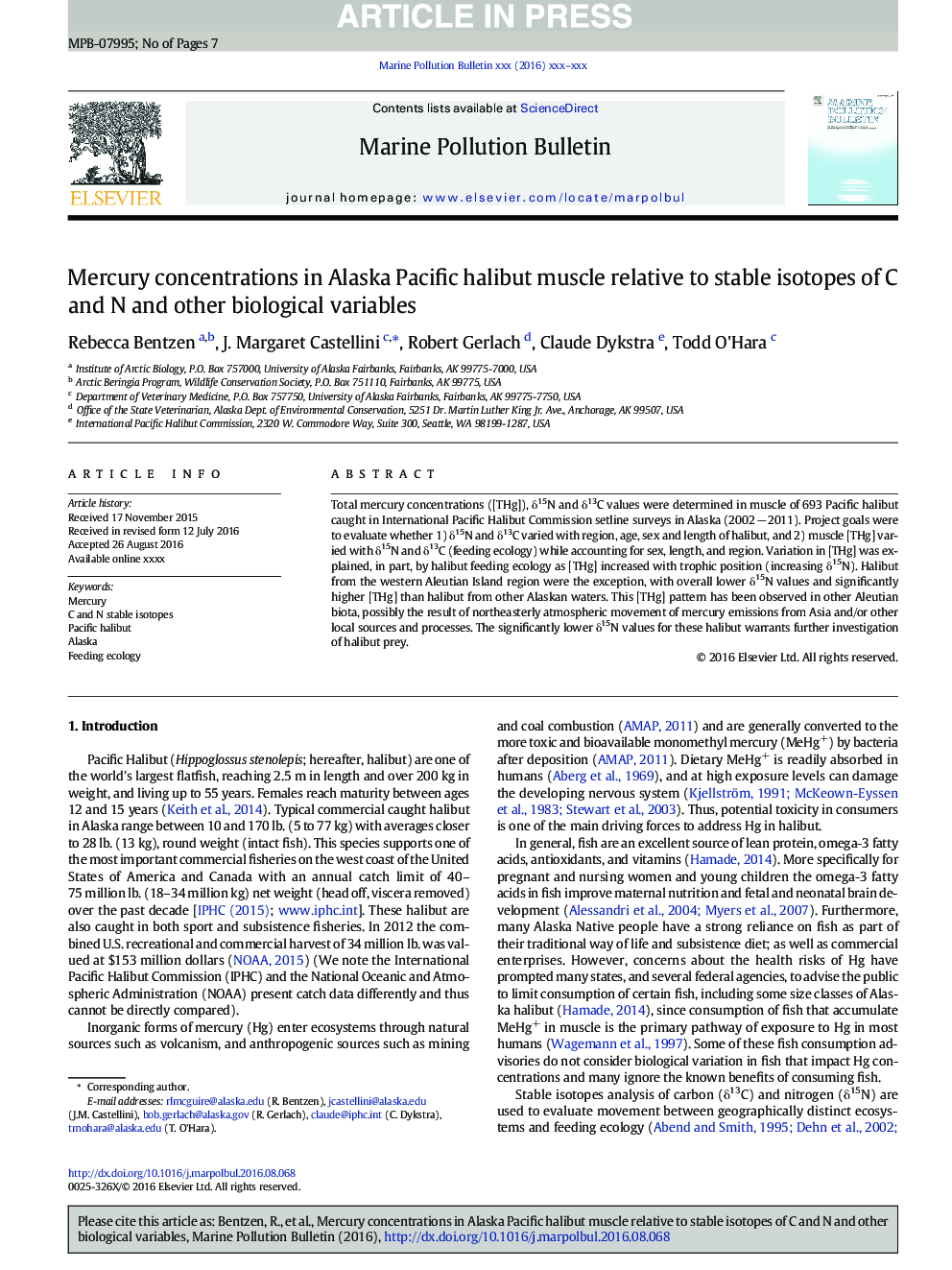| Article ID | Journal | Published Year | Pages | File Type |
|---|---|---|---|---|
| 5757850 | Marine Pollution Bulletin | 2016 | 7 Pages |
Abstract
Total mercury concentrations ([THg]), δ15N and δ13C values were determined in muscle of 693 Pacific halibut caught in International Pacific Halibut Commission setline surveys in Alaska (2002 â 2011). Project goals were to evaluate whether 1) δ15N and δ13C varied with region, age, sex and length of halibut, and 2) muscle [THg] varied with δ15N and δ13C (feeding ecology) while accounting for sex, length, and region. Variation in [THg] was explained, in part, by halibut feeding ecology as [THg] increased with trophic position (increasing δ15N). Halibut from the western Aleutian Island region were the exception, with overall lower δ15N values and significantly higher [THg] than halibut from other Alaskan waters. This [THg] pattern has been observed in other Aleutian biota, possibly the result of northeasterly atmospheric movement of mercury emissions from Asia and/or other local sources and processes. The significantly lower δ15N values for these halibut warrants further investigation of halibut prey.
Related Topics
Physical Sciences and Engineering
Earth and Planetary Sciences
Oceanography
Authors
Rebecca Bentzen, J. Margaret Castellini, Robert Gerlach, Claude Dykstra, Todd O'Hara,
